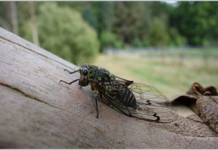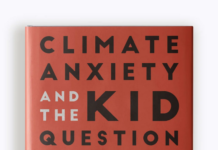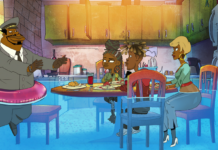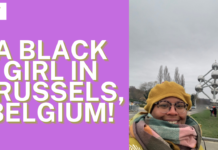
by: Debbie Orme and Jane Bartlett
How many uses can you find for a dead fox? When I happened upon one recently whilst out walking with my children, the poor lifeless creature suddenly became the catalyst for an important family moment. It was an opportunity to talk about death. You won’t find ‘thanatology’ on the curriculum at school, yet it’s the one subject that every child will have to deal with at some point. Thanatology is the little known word used to describe death education, a taboo in our society, especially when dealing with children. They learn about birth in sex education, but our final rite of passage is rarely acknowledged by either school or home.
It is estimated by Winston’s Wish, a charity that works with bereaved children and their families, that 5% of children will experience the death of a parent or sibling, and 10% will lose a parent, carer, close friend or relative. Most children will be aware of the death of someone more distant, or will lose a pet. No matter how idyllic we try to make childhood, death will always be there to cast a shadow.
The modern child’s relationship to death is likely to be a puerile one. Many children are exposed to high levels of glorified violence and death through television and video games. At Halloween they play ghoulish games to confront fears about what lies beyond the grave. However, most children are unlikely to have ever seen a real dead body, or possibly even had a meaningful conversation with an adult about our final destiny. It is important that we share with children the reality of death, not in a morbid, fearful way, but as a natural process and great mystery. We all want children to inhabit a happy, positive world, but to deny them the reality of death also denies them something about the reality of life. In the words of the popular spiritual writer, the late M.Scott Peck, ‘When we shy away from death, the ever-changing nature of things, we inevitably shy away from life.’ Also, if we do not allow the concept of death to gently permeate children’s lives, they will be ill prepared if sudden tragedy were to strike.
The children’s bereavement charity The Gone Forever Project is pressing the Government and Teacher’s Training Agency to include death education in the school curriculum. It wants to ensure that all teachers are trained in the awareness of the issues which surround loss and bereavement, as part of their initial training. Teachers can include death education across the curriculum, as part of emotional literacy in Personal, Social and Health Education, or funeral rituals in Religious Education. Death could also be discussed in science lessons in terms of the lifecycle of the natural world. Schools also often have to respond to real deaths, either of a pupil, a parent or teacher. My son’s junior school recently held an assembly in memory of one its pupils who had died of leukaemia. Helium balloons were released by the children with goodbye messages. Holding such a ceremony was controversial amongst the staff, some of whom thought it might be unnecessarily upsetting. When I went to collect my children, many pupils were weeping. It was terribly sad, but I felt that as well as being an important farewell ritual, it also reminded us all of the value of life. Parents and children seemed to be acutely aware of how much they loved each other that day.
Parents will find that opportunities to discuss death with their children will spontaneously occur. On the simplest level you can point out to your children the cycles of birth and death that exist in nature. Notice together how the flowers first bloom, then die, how autumn and winter follow spring and summer. Discuss the ageing process by observing the physiology between old and young; and like the fox we found at the roadside, there are likely to be animal corpses to contemplate.
The death of a pet often provides children with their first experience of personal grief, and for this reason is a positive learning experience. When a child’s pet dies a parent needs to be sensitive about the loss, no matter how small the animal. An important way of doing this is by making sure there is a thoughtful goodbye ritual. This reassures the child that the pet was cared for, as well as providing a focus for their bereavement. Debbie Orme runs ‘Goodbye My Pet’ a company that makes attractive cardboard pet coffins and grave markers. It also supplies a helpful ceremony book to guide parents and children through a simple pet funeral at home. ‘I get lots of letters from families telling me how much the funeral helped them all come to terms with the loss of their pet. Parents also say that the experience enabled the family to share their beliefs and feelings in a way they wouldn’t normally. Adult pet lovers have used my coffins and ceremony booklets too, with similar results.’ Debbie Orme believes that although the loss of a pet is a sad event for children, if handled well, it can also become a meaningful and memorable family experience.
Children all deal with bereavement in different ways. Typically they may express their feelings through actions rather than words. Young children may wet the bed, cry and seek attention or feel unwell. Older children my display changes in personality, show sleep and appetite disturbances, find it hard to concentrate at school and become depressed. Some children may show no obvious signs of bereavement at all initially. It is quite usual for grief to come in waves and for a child to feel sad one moment, and the next seem perfectly happy. Although talking to children about the death of a person or animal that they love may be one of the hardest things we ever have to do, it is one of the most important ways we can help as they journey through their grief.
Children’s levels of understanding about death
Under twos
Have little concept of death but will still miss the deceased and sense the upset.
Two to four year olds
Find it hard to understand that death is permanent, and may ask when the deceased is coming back.
Five to ten year olds
They begin to understand the finality of death, and can have lots of questions about it.
Adolescence
The finality of death is more fully understood. It may be a time of high emotions, and a reluctance to open up and share with you.
| About The Author
Debbie Orme is director of Goodbye My Pet, providers of home burial items and pet coffins. http://www.goodbyemypet.co.uk. |







































